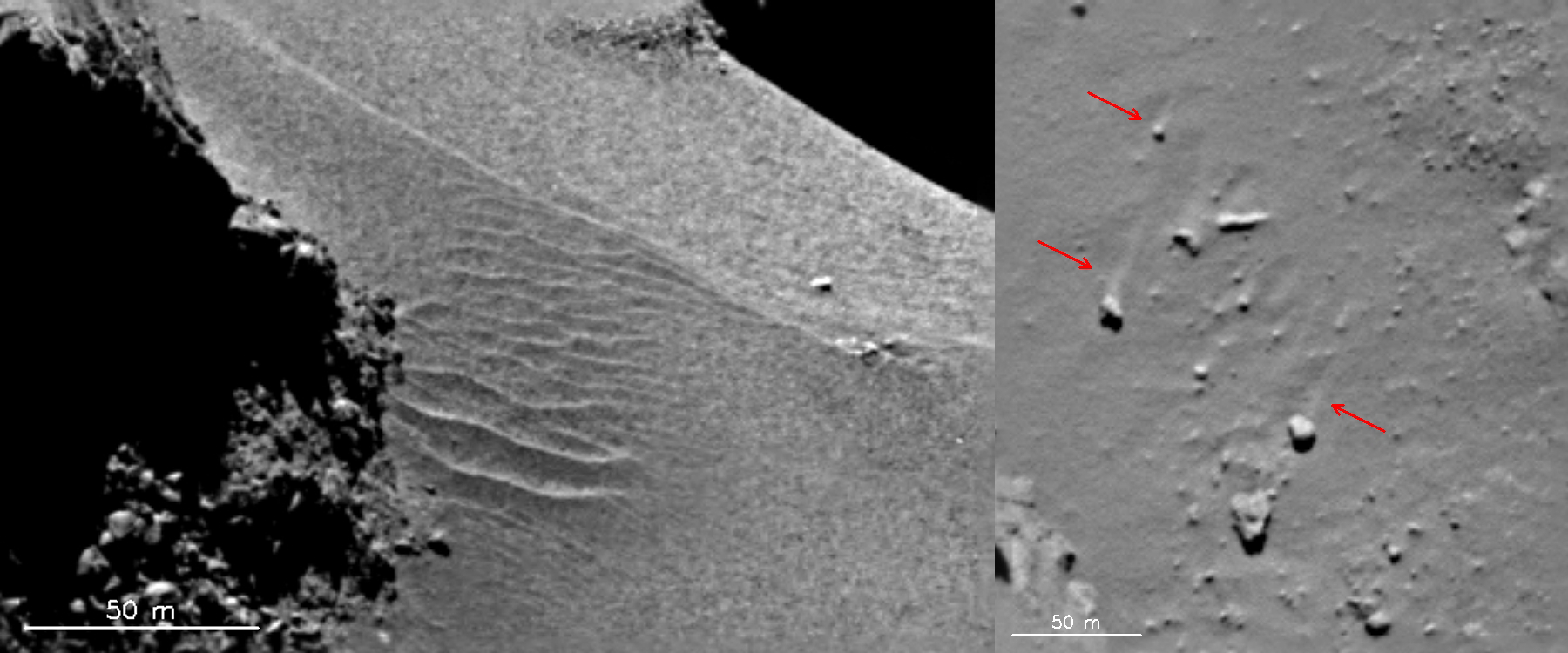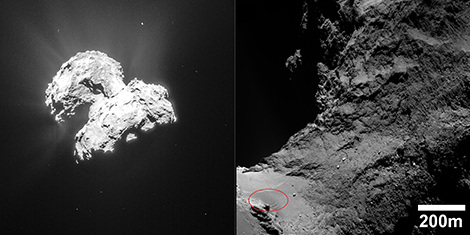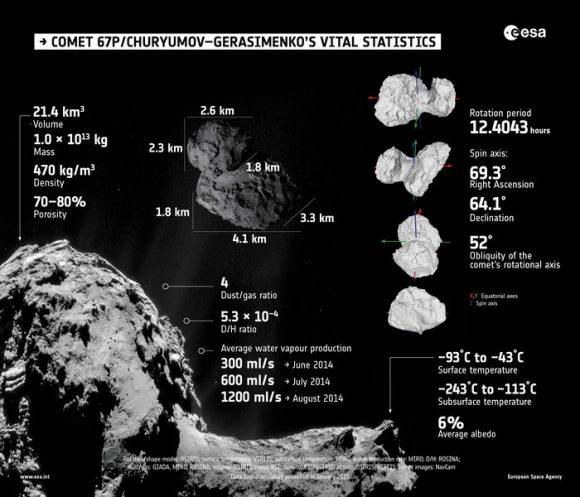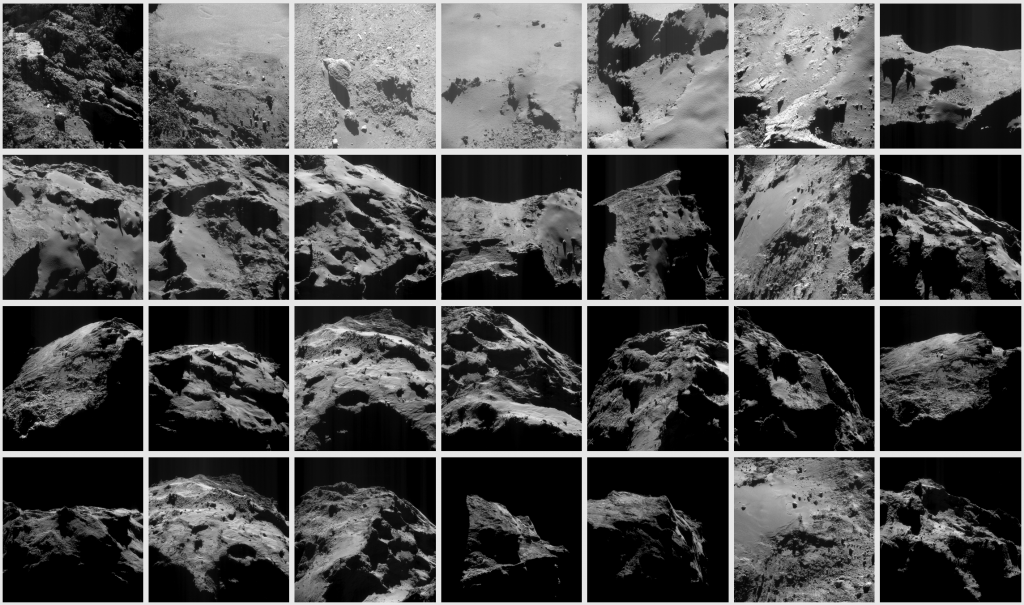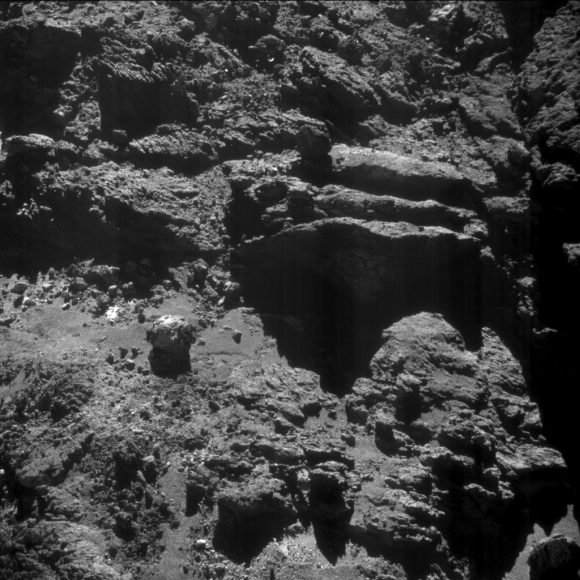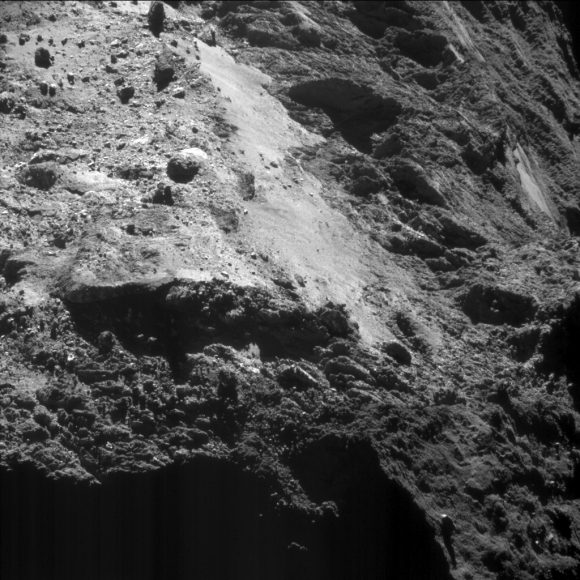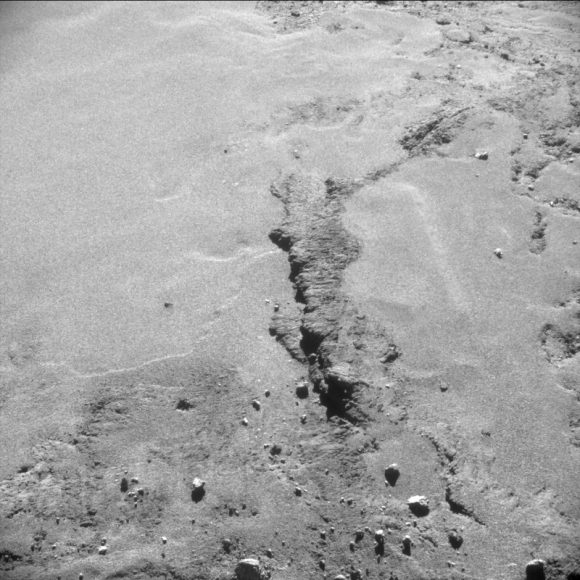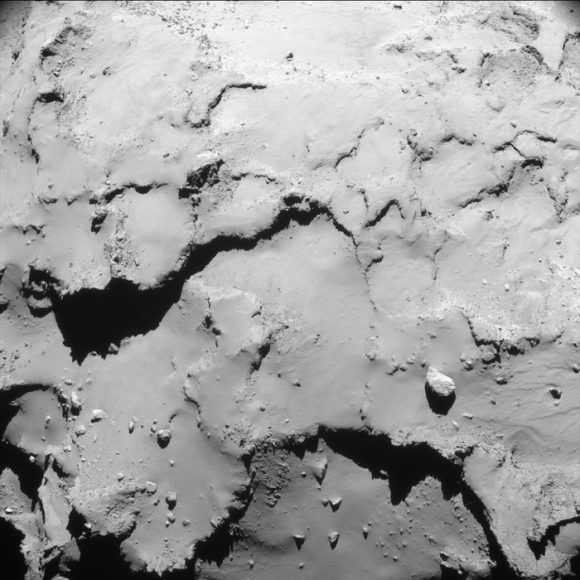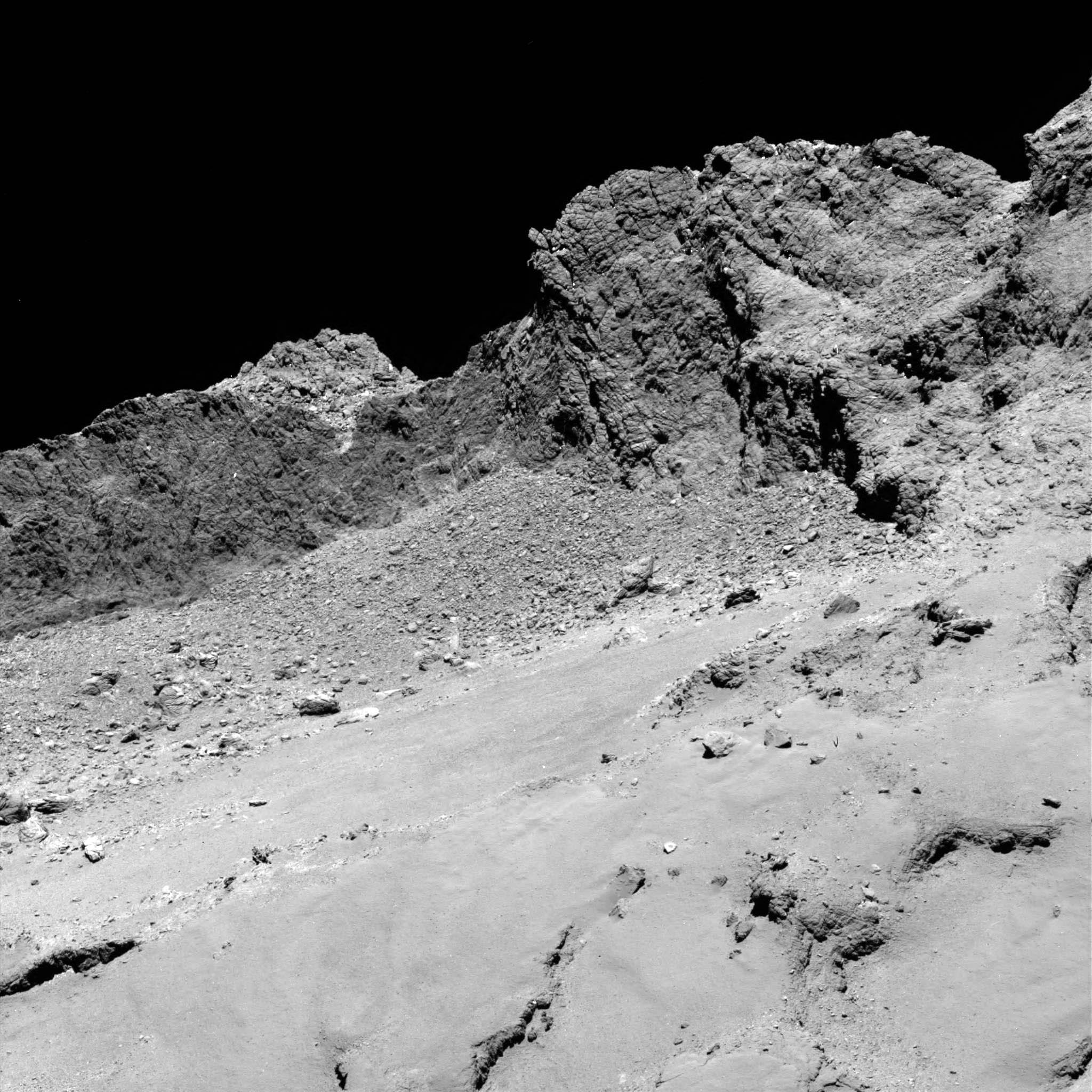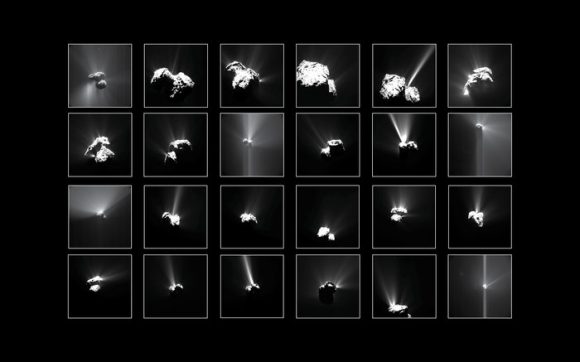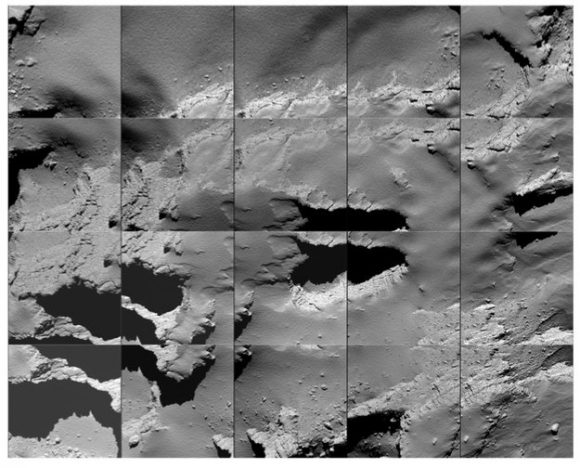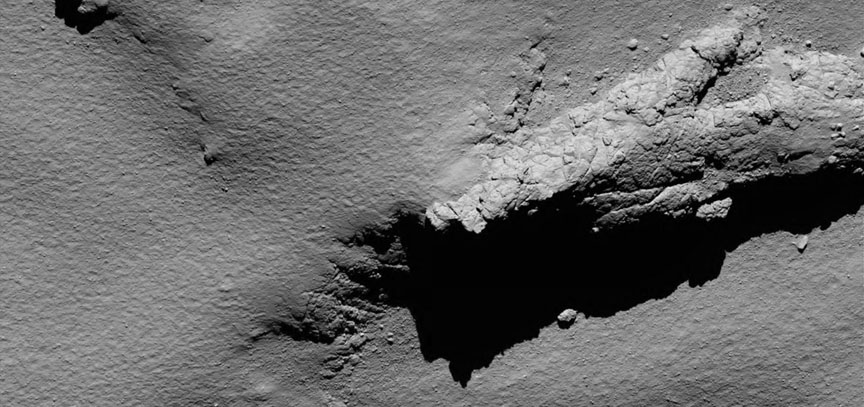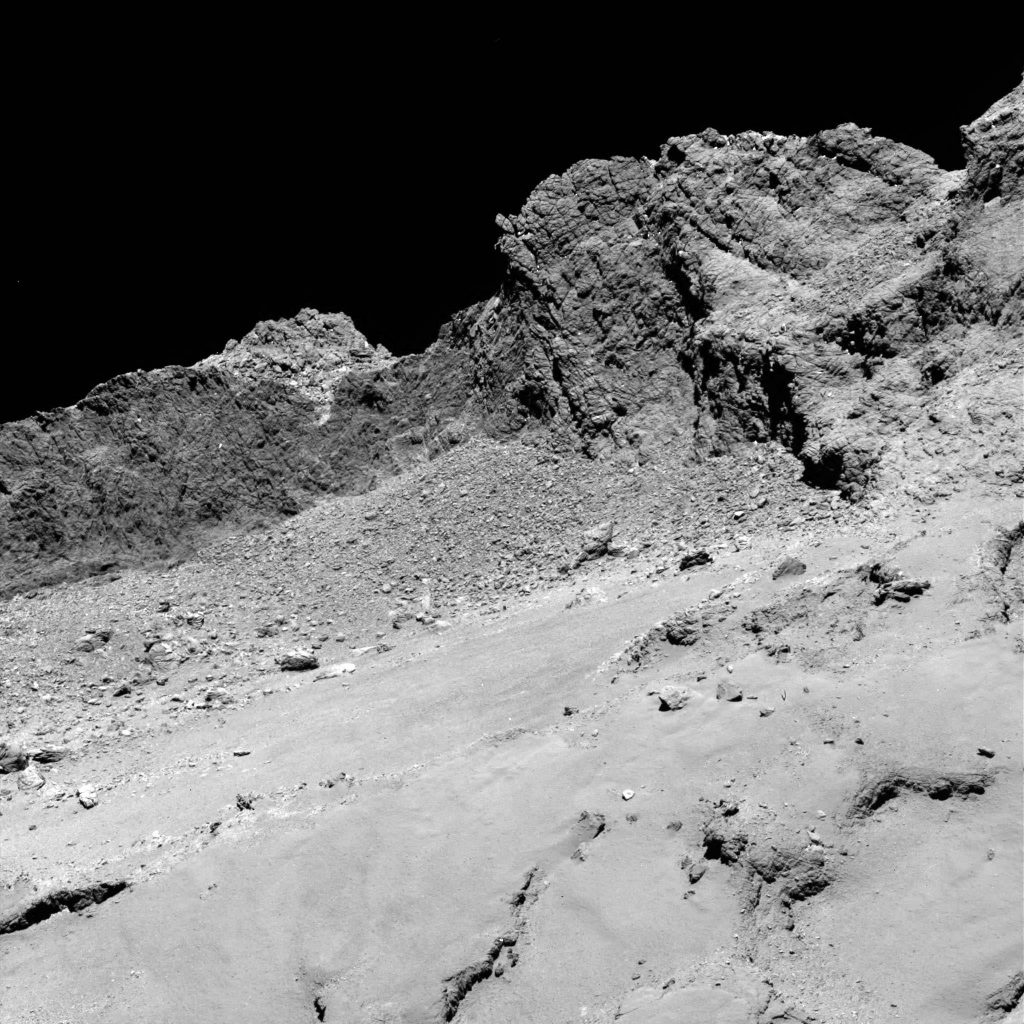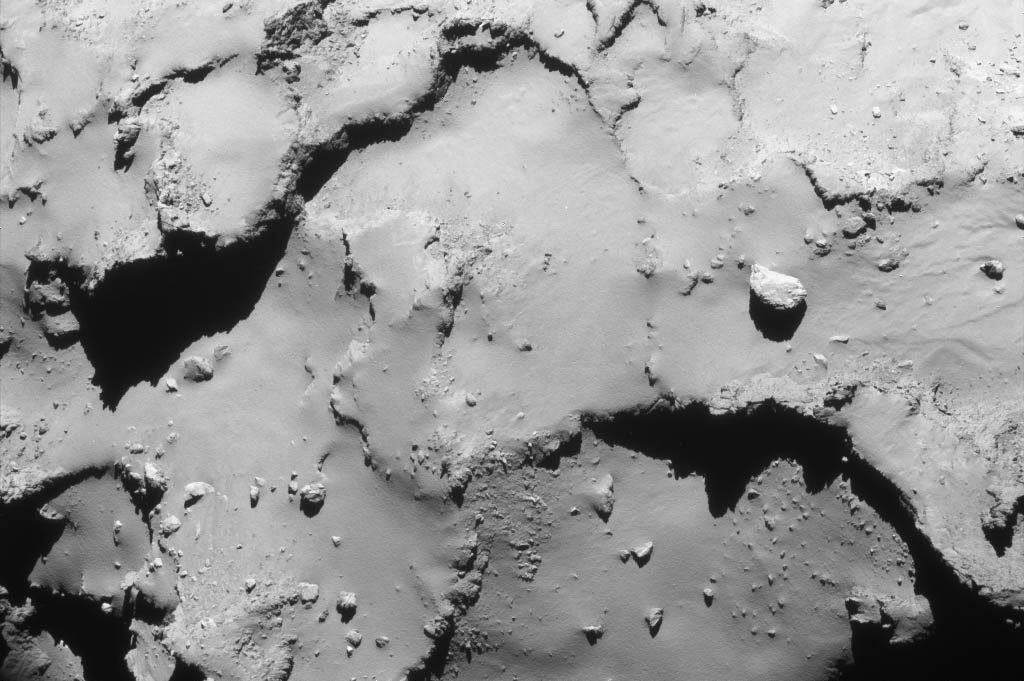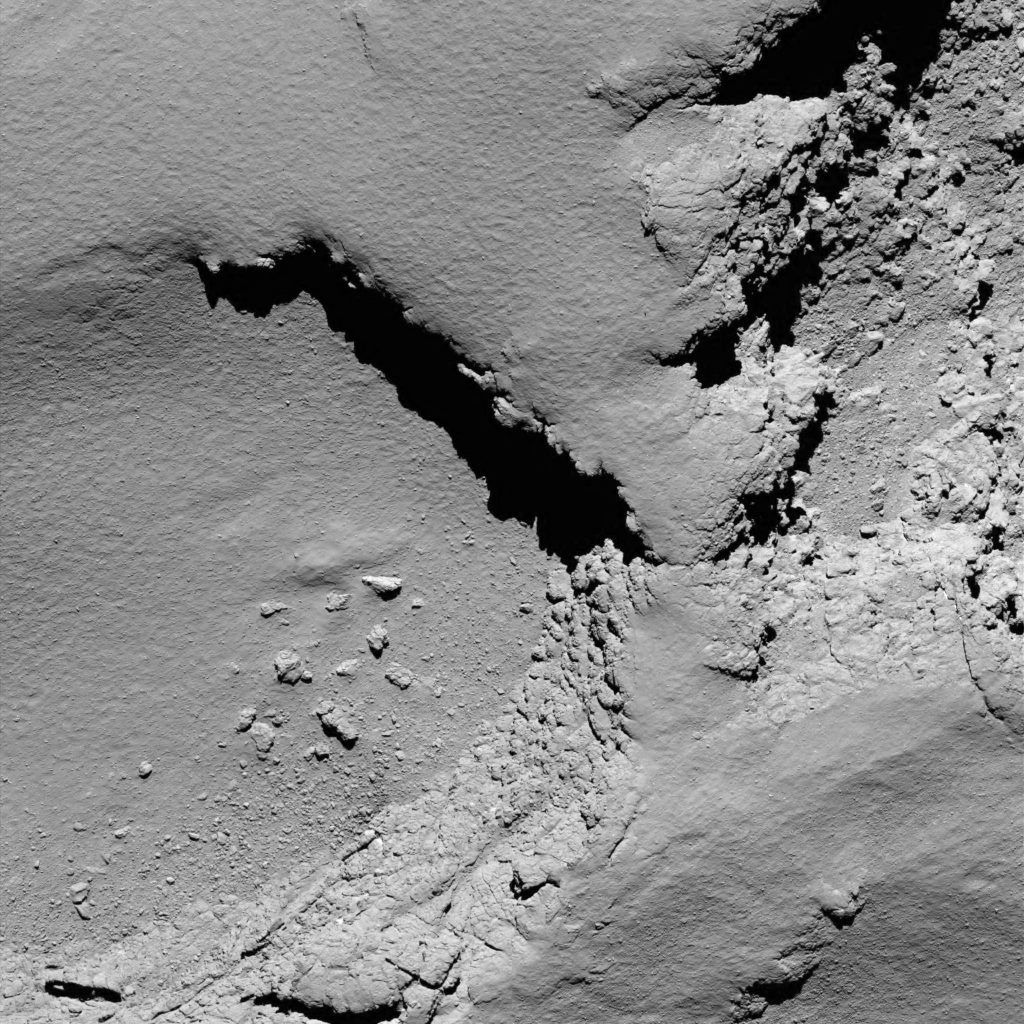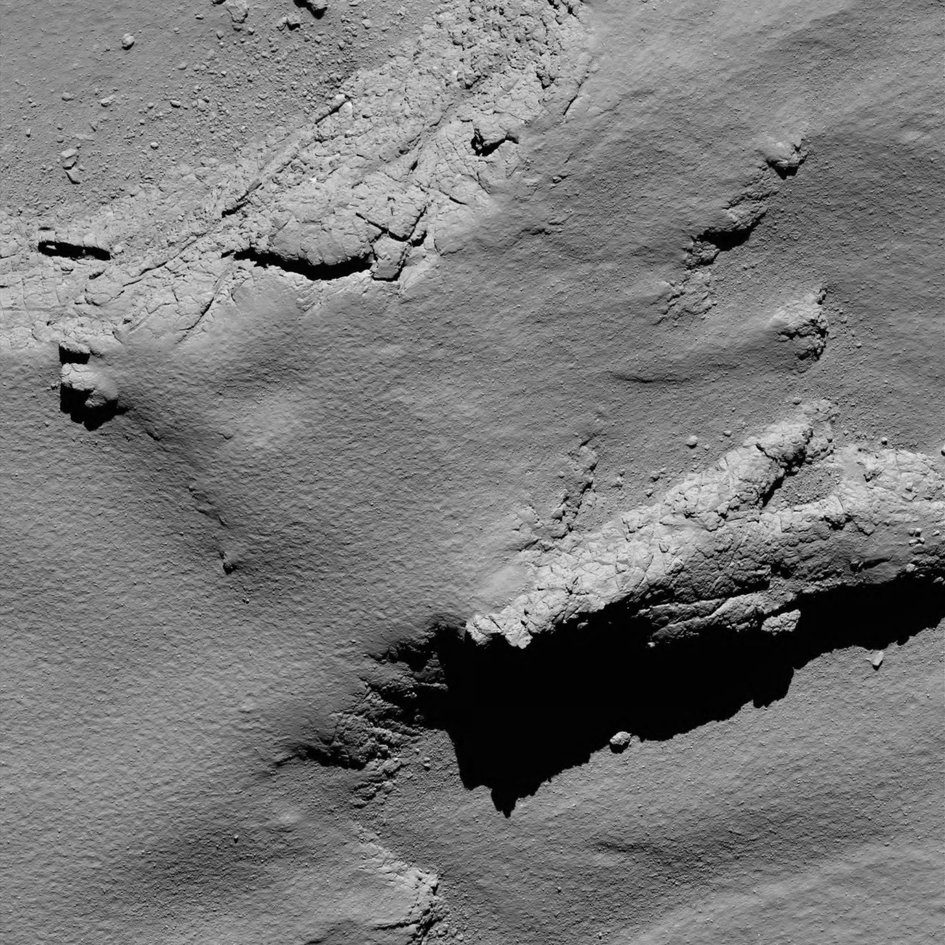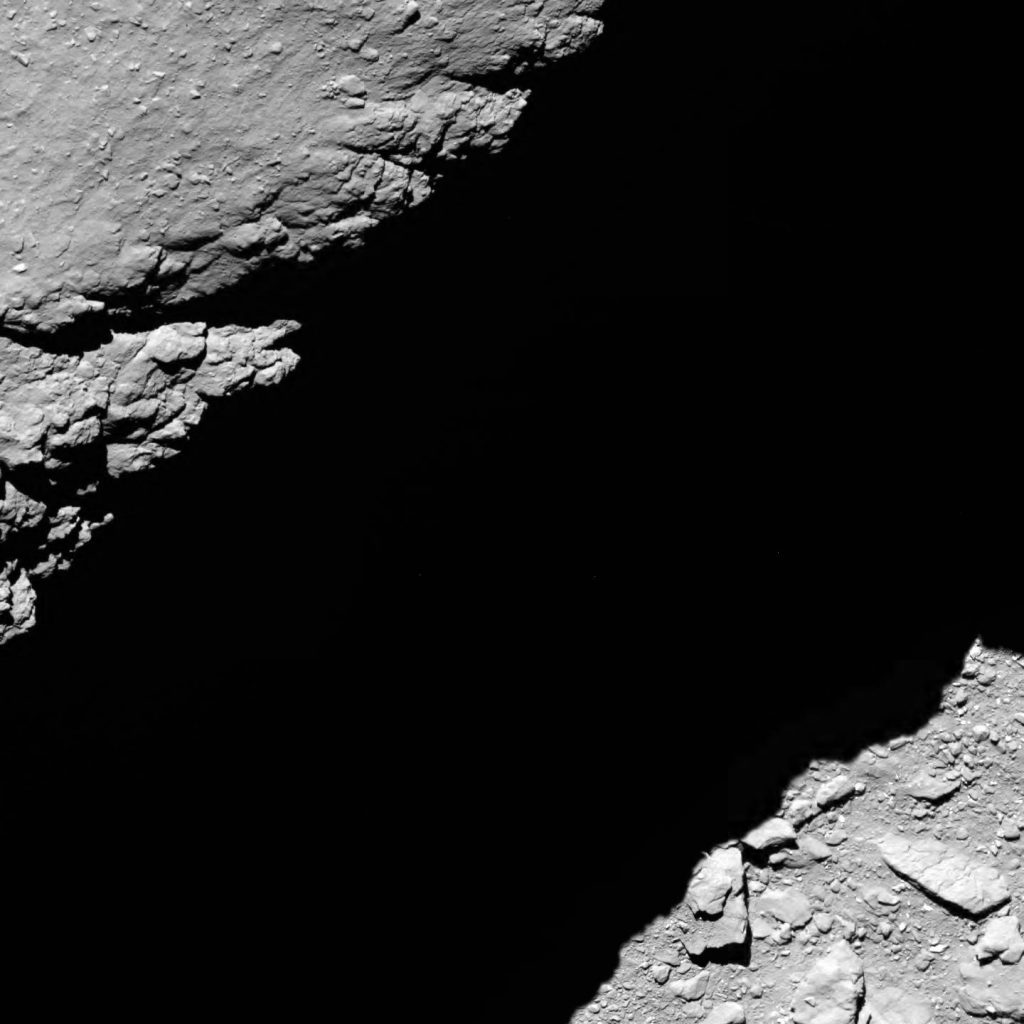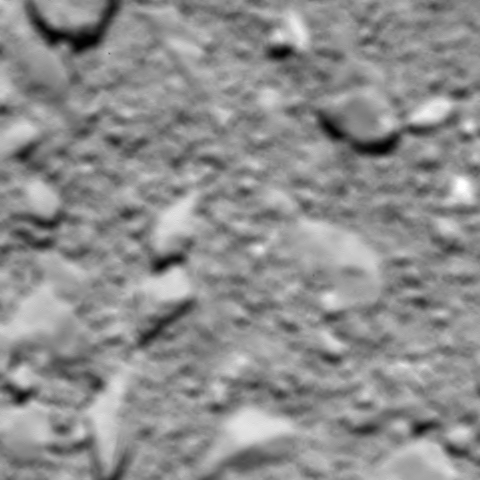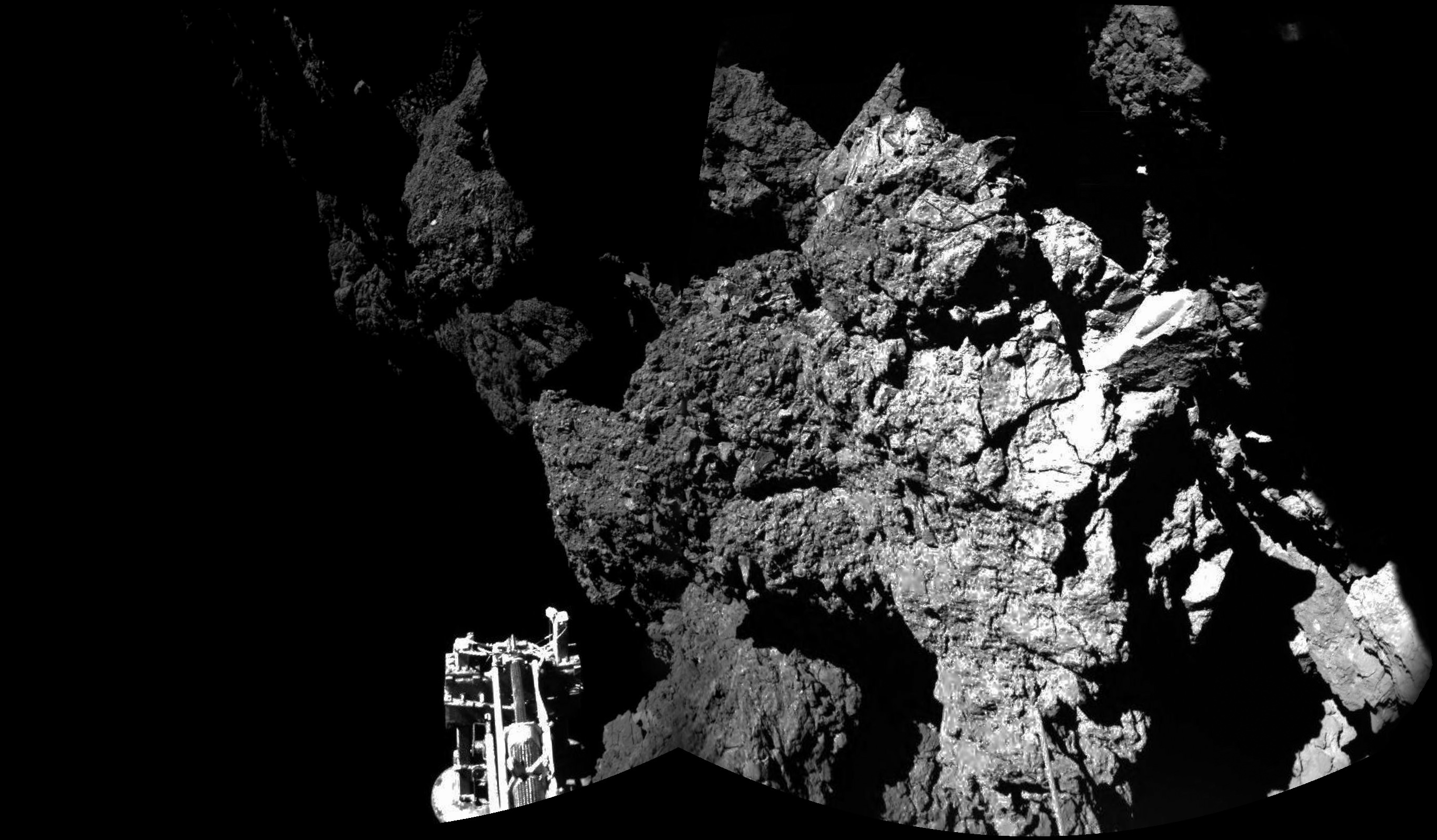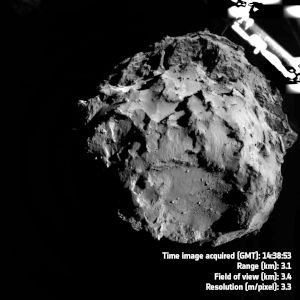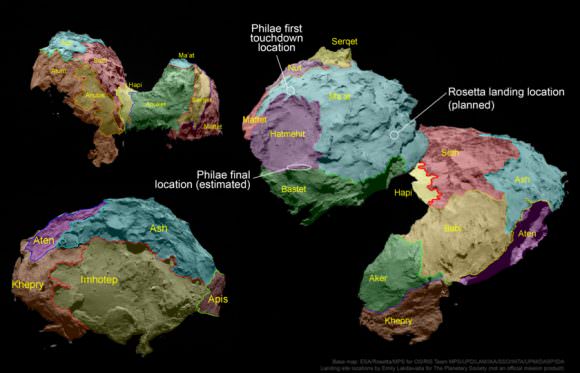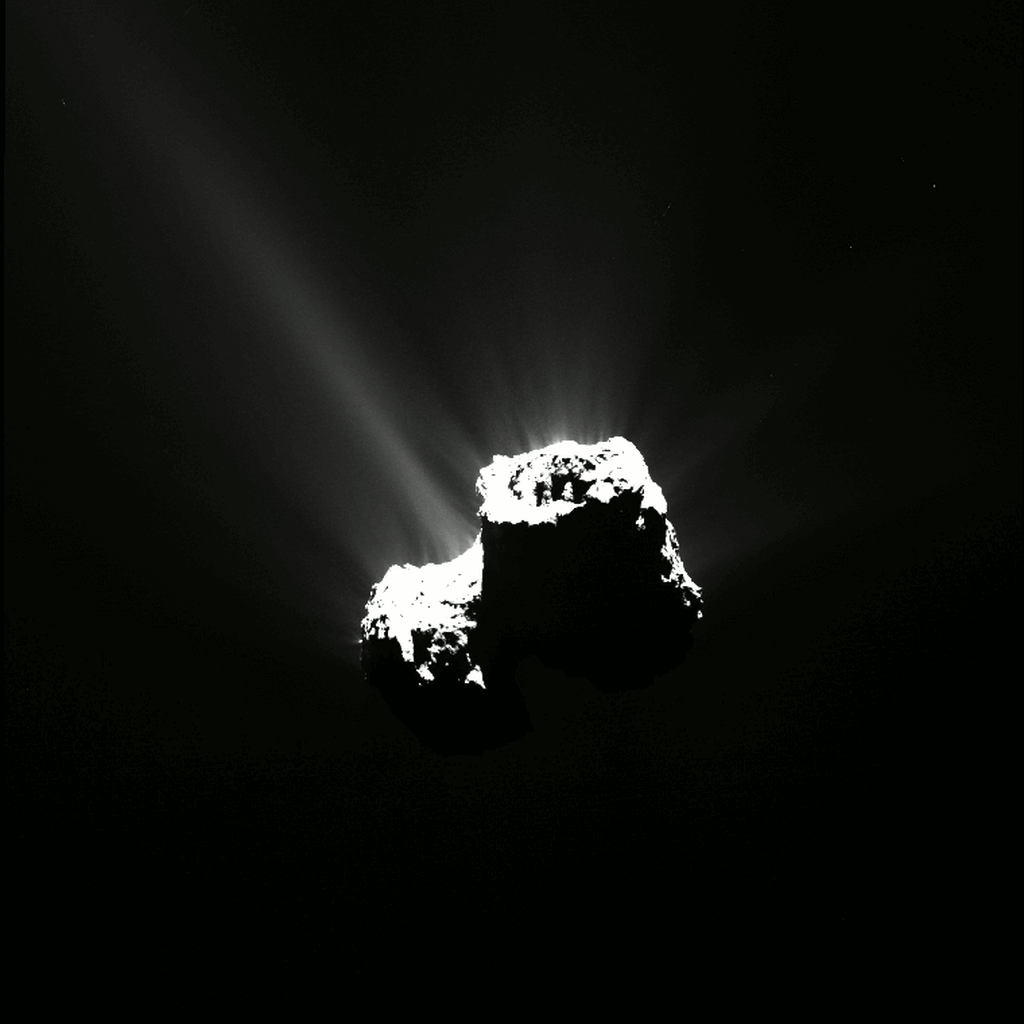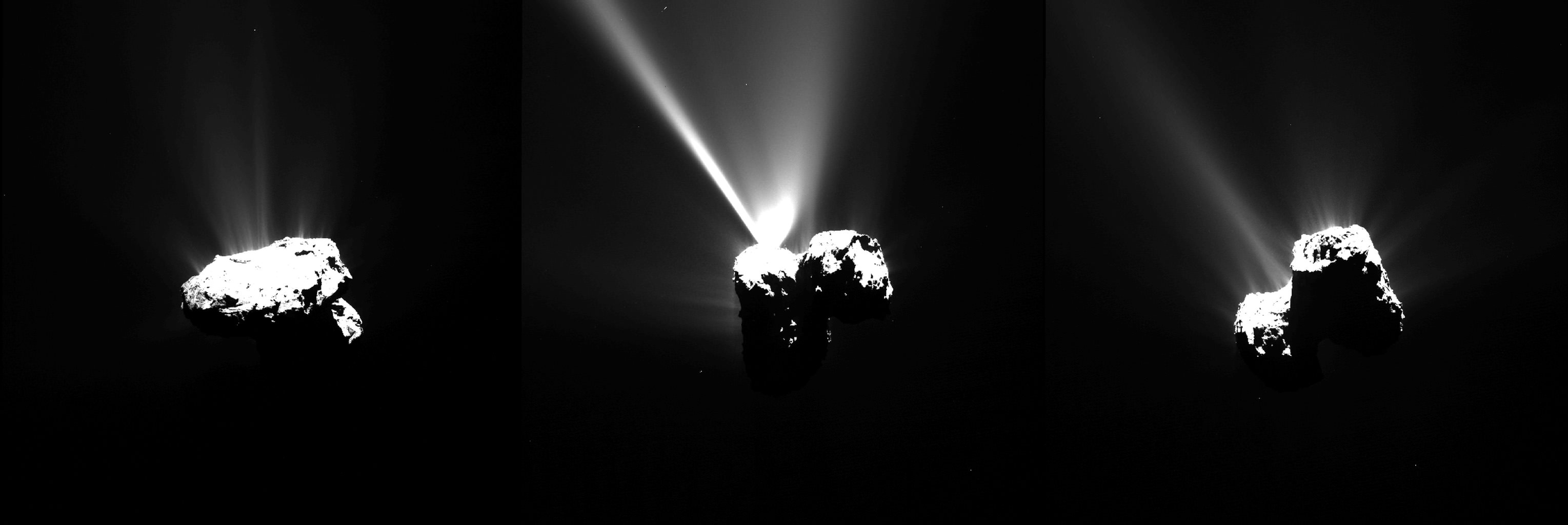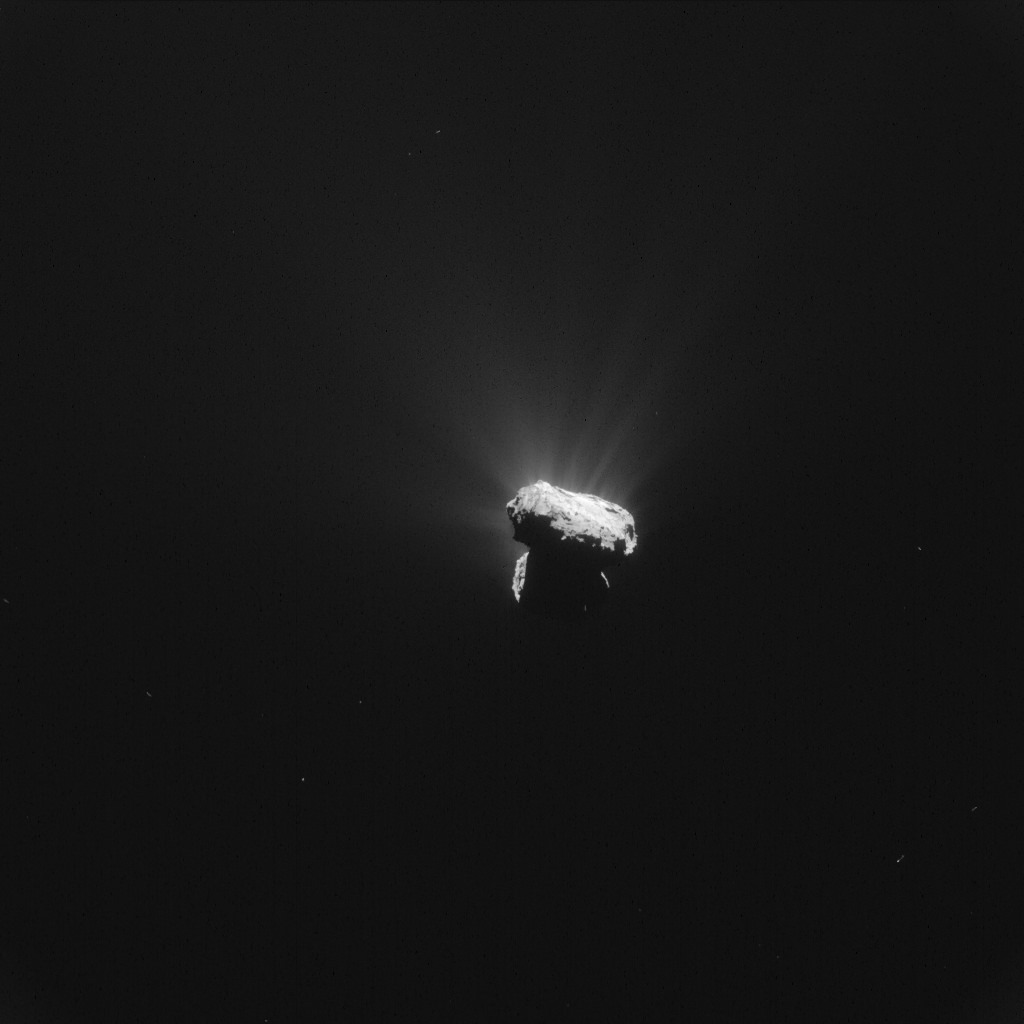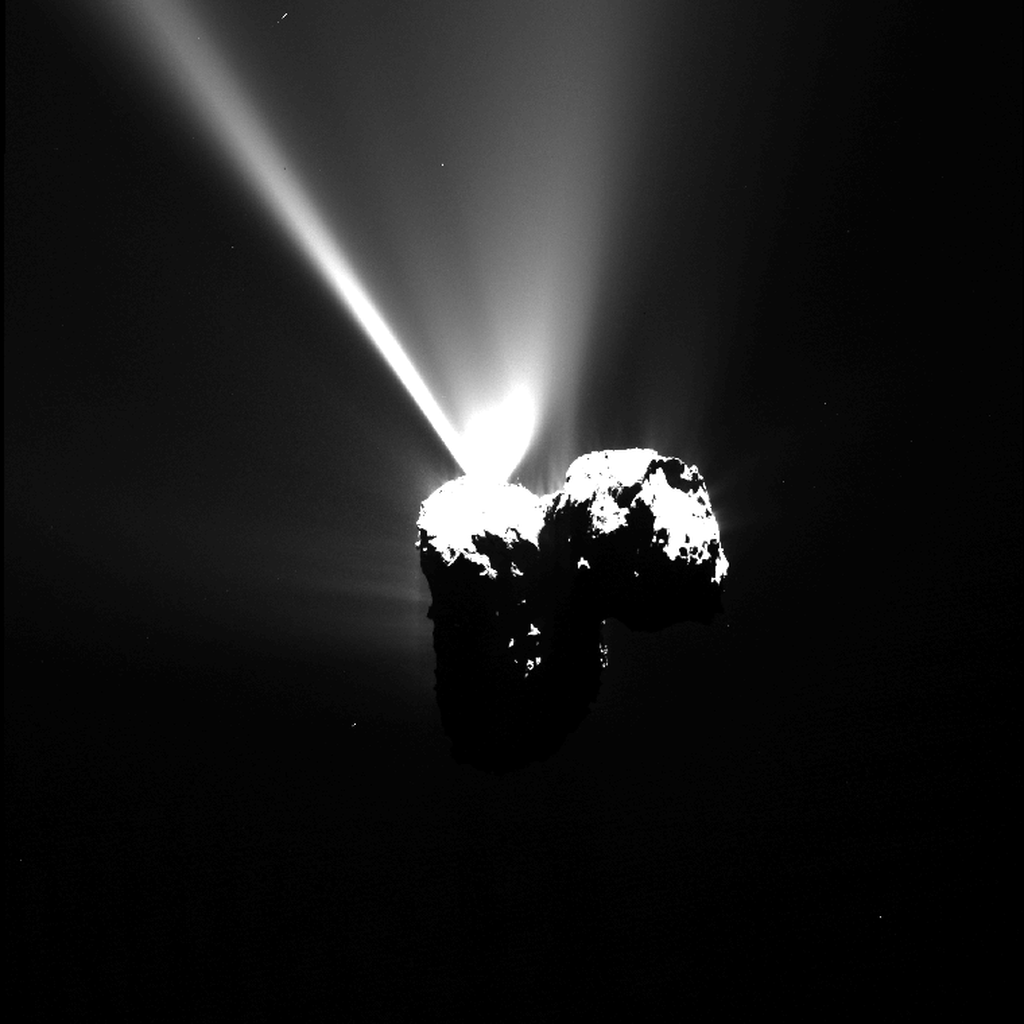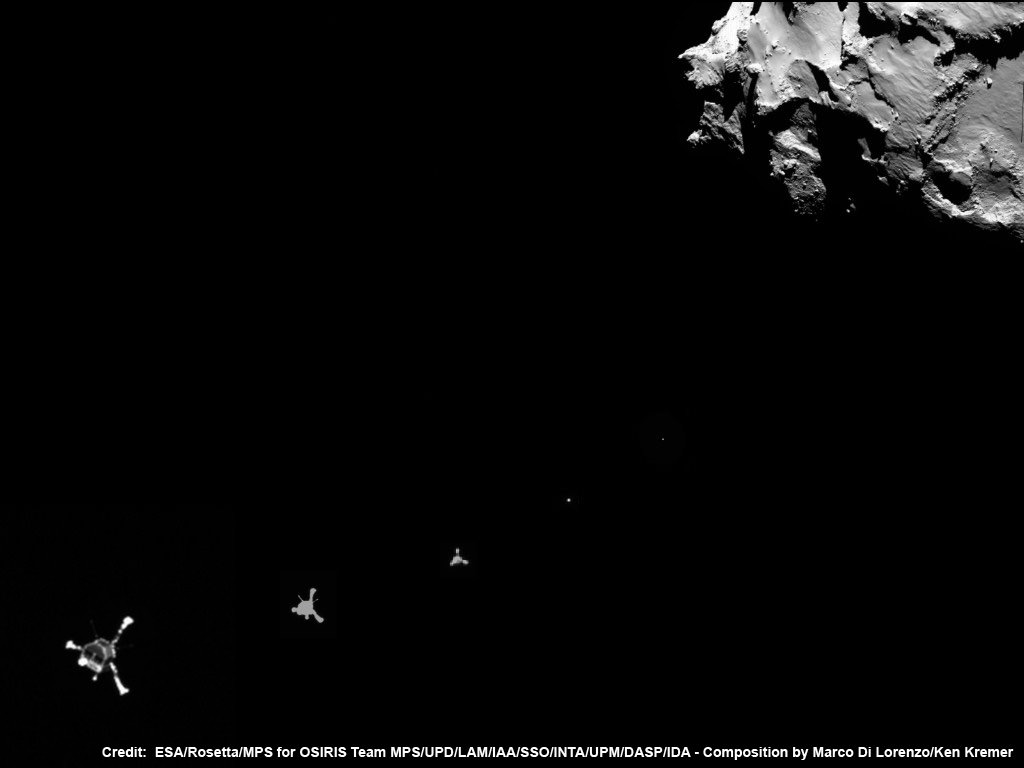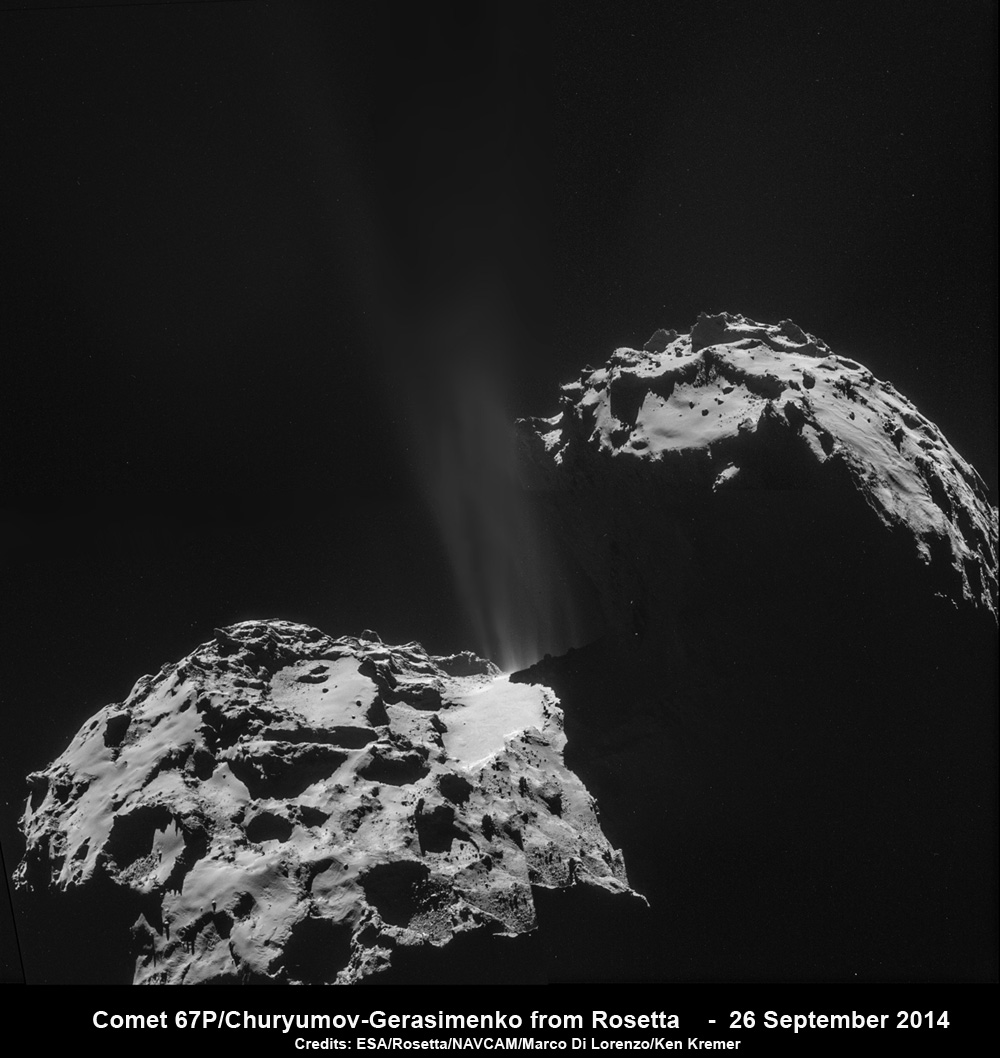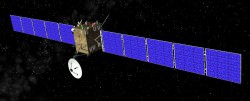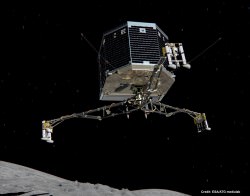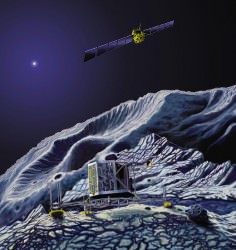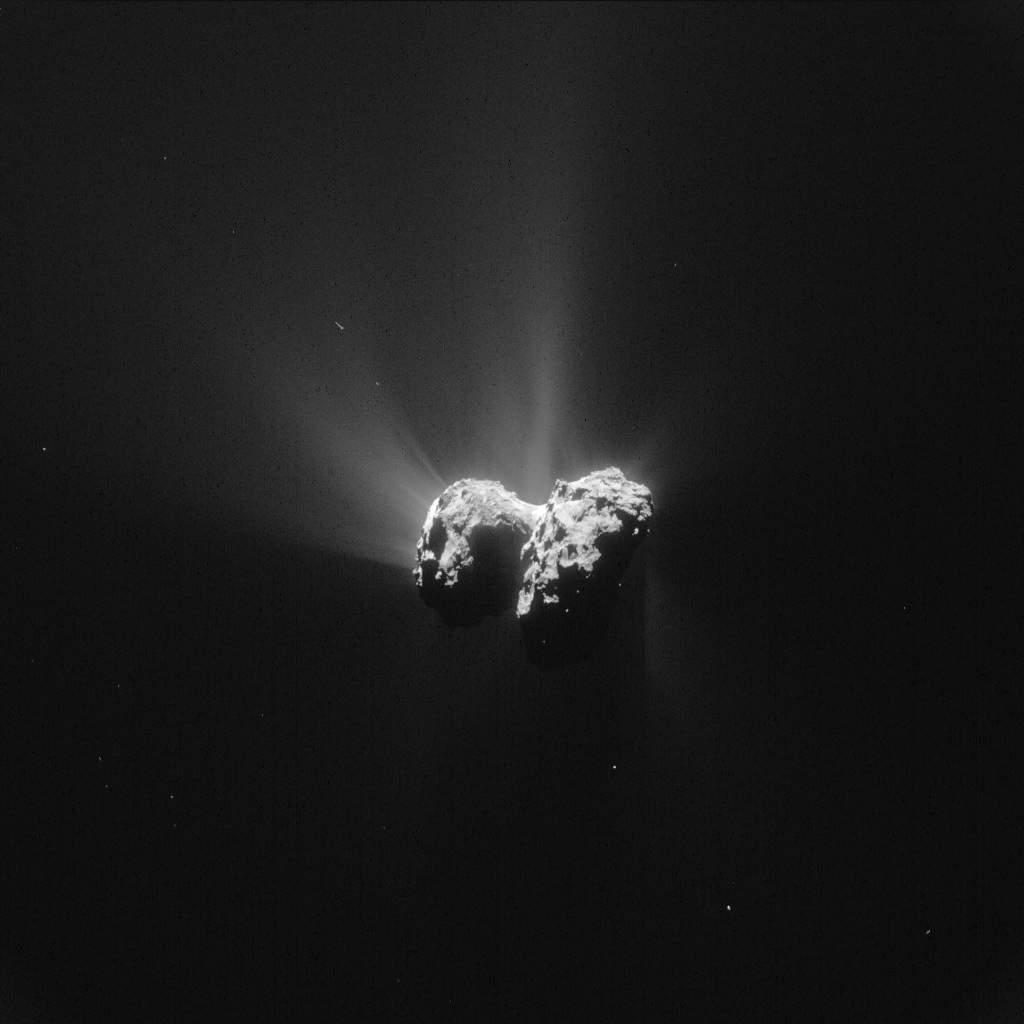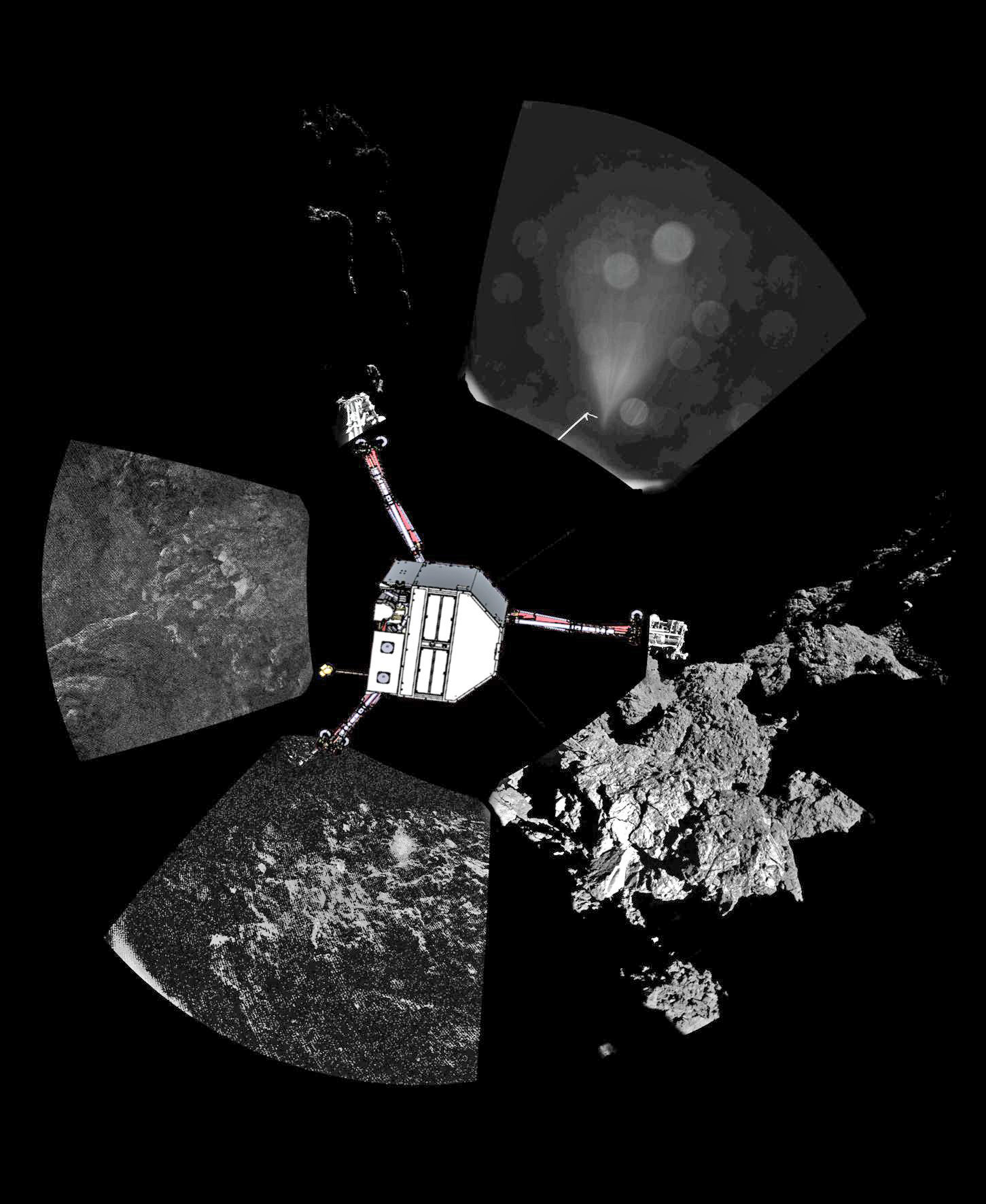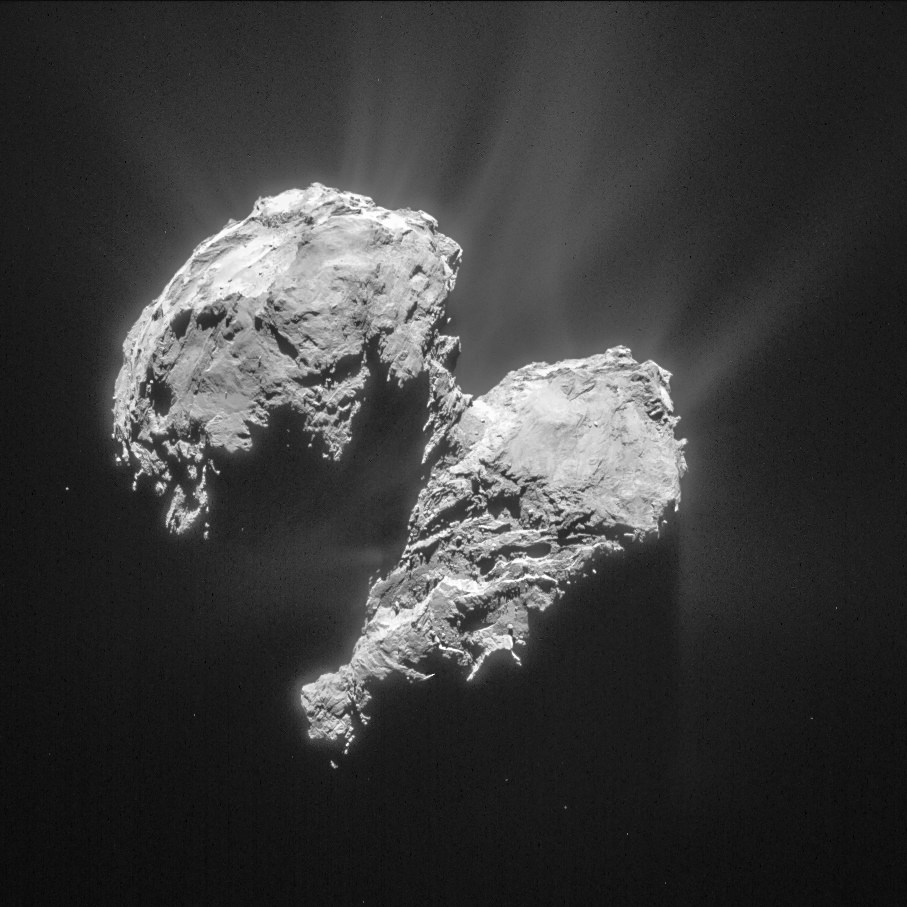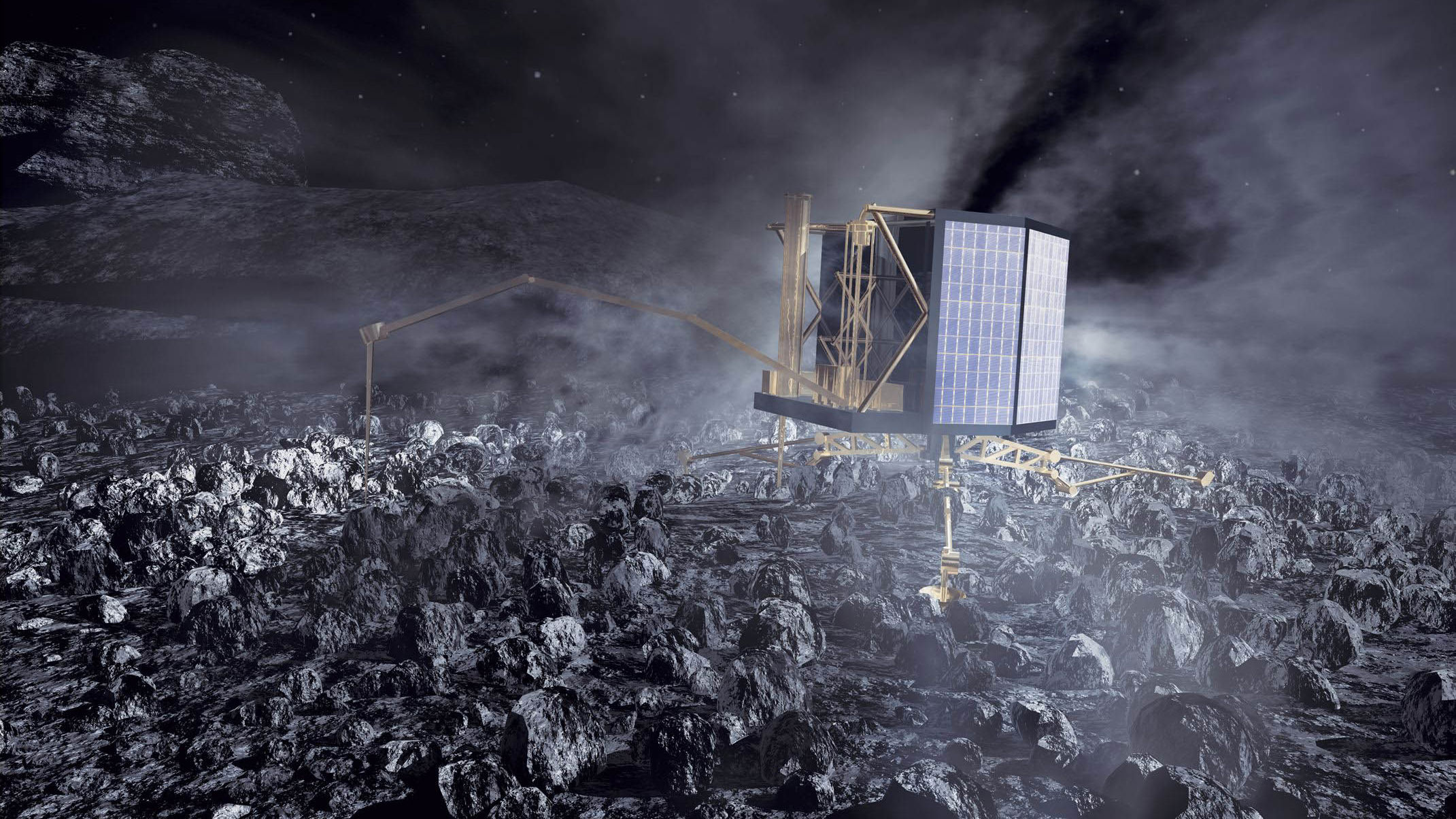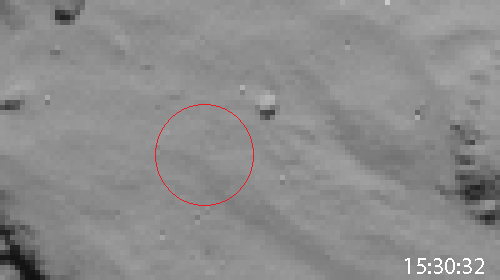The Rosetta spacecraft learned a great deal during the two years that it spent monitoring Comet 67P/Churyumov-Gerasimenko – from August 6th, 2014 to September 30th, 2016. As the first spacecraft to orbit the nucleus of a comet, Rosetta was the first space probe to directly image the surface of a comet, and observed some fascinating things in the process.
For instance, the probe was able to document some remarkable changes that took place during the mission with its OSIRIS camera. According to a study published today (March. 21st) in Science, these included growing fractures, collapsing cliffs, rolling boulders and moving material on the comet’s surface that buried some features and exhumed others.
These changes were noticed by comparing images from before and after the comet reached perihelion on August 13th, 2015 – the closets point in its orbit around the Sun. Like all comets, it is during this point in 67P/Churyumov-Gerasimenko’s orbit that the surface experiences its highest levels of activity, since perihelion results in greater levels of surface heating, as well as increased tidal stresses.
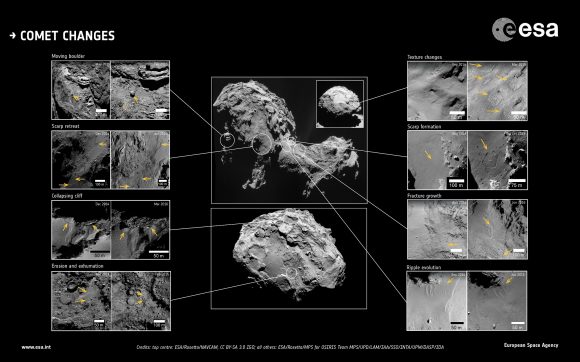
Basically, as comets gets closer to the Sun, they experience a combination of in-situ weathering and erosion, sublimation of water-ice, and mechanical stresses arising from an increased spin rate. These processes can be either unique and transient, or they can place over longer periods of time.
As Ramy El-Maarry, a scientist from the Max-Planck Institute for Solar System Research and the lead author of the study, said in an ESA press statement:
“Monitoring the comet continuously as it traversed the inner Solar System gave us an unprecedented insight not only into how comets change when they travel close to the Sun, but also how fast these changes take place.”
For instance, in-situ weathering occurs all over the comet and is the result of heating and cooling cycles that happen on both a daily and a seasonal basis. In the case of 67P/Churyumov-Gerasimenko’s (6.44 Earth years), temperatures range from 180 K (-93 °C; -135 °F) to 230 K (-43 °C; -45 °F) during the course of its orbit. When the comet’s volatile ices warm, they cause consolidated material to weaken, which can cause fragmentation.
Combined with the heating of subsurface ices – which leads to outgassing – this process can result in the sudden collapse of cliff walls. As other photographic evidence that was recently released by the Rosetta science team can attest, this sort of process appears to have taken place in several locations across the comet’s surface.
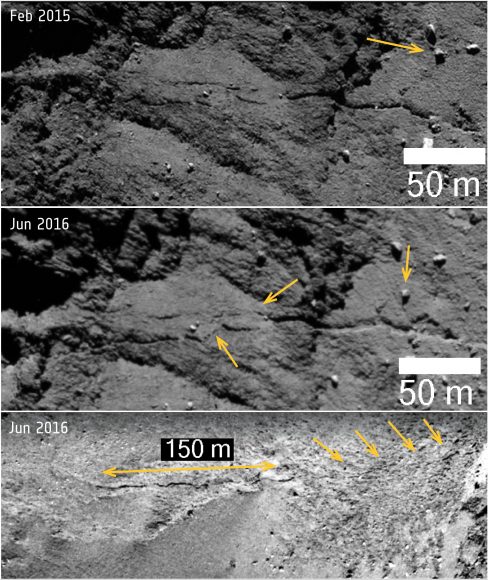
Similarly, comets experience increased stress because their spin rates speed up as they gets closer to the Sun. This is believed to be what caused the 500 meter-long (1640 ft) fracture that has been observed in the Anuket region. Originally discovered in August of 2014, this fracture appeared to have grown by 30 meters (~100 ft) when it was observed again in December of 2014.
This same process is believed to be responsible for a new fracture that was identified from OSIRIS images taken in June 2016. This 150-300 meter-long (492 – 984 ft) fracture appears to have formed parallel to the original. In addition, photographs taken in February of 2015 and June of 2016 (shown above) revealed how a 4 meter-wide (13 ft) boulder that was sitting close to the fractures appeared to have moved by about 15 meters (49 ft).
Whether or not the two phenomena are related is unclear. But it is clear that something very similar appears to have taken place in the Khonsu region. In this section of the comet (which corresponds to one of its larger lobes), images taken between May of 2015 and June 2016 (shown below) revealed how a much larger boulder appeared to have moved even farther between the two time periods.
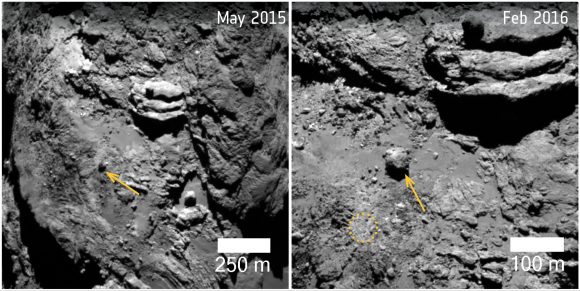
This boulder – which measures some 30 meters (98 ft) across and weighs an estimated 12,800 metric tonnes (~14,100 US tons) – moved a distance of about 140 meters (~460 ft). In this case, outgassing during perihelion is believed to be the culprit. On the one hand, it could have caused the surface material to erode beneath it (thus causing it to roll downslope) or by forcibly pushing it.
For some time, it has been known that comets undergo changes during the course of their orbits. Thanks to the Rosetta mission, scientists have been able to see these processes in action for the first time. Much like all space probes, vital information continues to be discovered long after the Rosetta mission officially came to an end. Who knows what else the probe managed to witness during its historic mission, and which we will be privy to?
Further Reading: ESA


